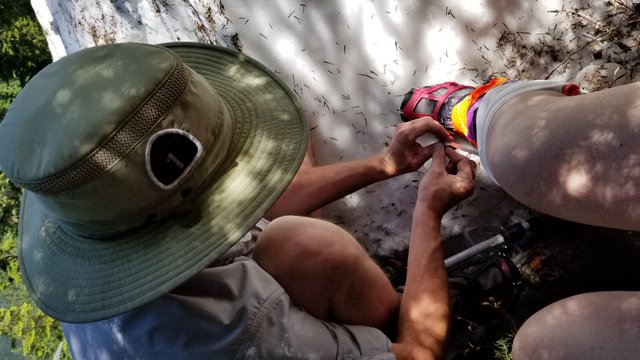2nd Attempt at the Pacific Crest Trail
The entire Spring of 2017 for me was spent on physical conditioning and logistical preparations for a big hike. Planned to hike most of the Pacific Crest Trail (PCT) a 2,650 mile hiking trail extending from the Canadian border to Mexico.

After one week on the trail, under heavy snow conditions, my partner fell down a snow slope into a tree well and broke her ankle. https://steemit.com/life/@radiumbattery/emergency-first-responder-is-you

The trip had to be cut short, and I've been planning another attempt ever since. From here on out I'll use this blog primarily to document my process of getting ready for the hike, doing reviews of backpacking gear and sharing the general process with the Steemit community. All feedback is appreciated.
The big shiny target for many people dreaming about hiking the PCT is to complete the entire 2,650 mile hike in one season. It takes about 4-5 months to complete, and you'll average between 20-35 miles per day. It is a huge achievement. Many people choose to hike the trail in sections, one year at a time. Fires will invariably close sections of the trail each year, or other huge obstacles like in my case with the massive snow fall.
The next choice is whether to hike it Northbound from Mexico or vice-versa from Canada Southbound. Most people hike it Northbound from Mexico, and for many different reasons. Fewer start up North and head South. The big challenge for Southbound hikers is to make it to the Sierra Nevada range before late October when the first snows begin to fall, and afternoon thunder storms can be deadly.
I'll be hiking it Southbound, leaving early July of 2019. I want to avoid the crowds, and the Southern California desert which comprises over 800 miles of trail. Also the Northern Cascade mountains of Washington hold a special allure for me and I want to make sure to see them.

So, for now the focus is on gear. What to bring. I'm trying to keep my pack weight around 16 lbs. including food for 6 days. I'm looking at some of the lightest gear options available. The stove: Historically I've used a jetboil stove:

The upside with these stoves is their efficiency. They quickly boil water and conserve fuel well. However, you must carry a gas canister with you which weighs about 1/2 lb. and must be replenished. I'm going with a titanium wood-burning stove this time:

These weigh in at 2.8 ounces. Instead of the jetboil cup, I'll use a titanium pot: (1.9 oz)

That will bring my total stove weight down from almost 1 pound to 4.7 oz, or one third the original weight. If there is no wood to burn at a campsite, I will have a small supply of these fuel cubes which can boil 16 oz. of water:

It will also take up much less space in my pack.
In the next post we'll take a look at tents and sleeping bags for traveling light, as well as an overview of the first section of trail in Washington's Northern Cascades.

Exciting project. Wish you luck 👍🏻
Your post had been curated by the @buildawhale team and mentioned here:
https://steemit.com/curation/@buildawhale/buildawhale-curation-digest-08-23-18
Keep up the good work and original content, everyone appreciates it!